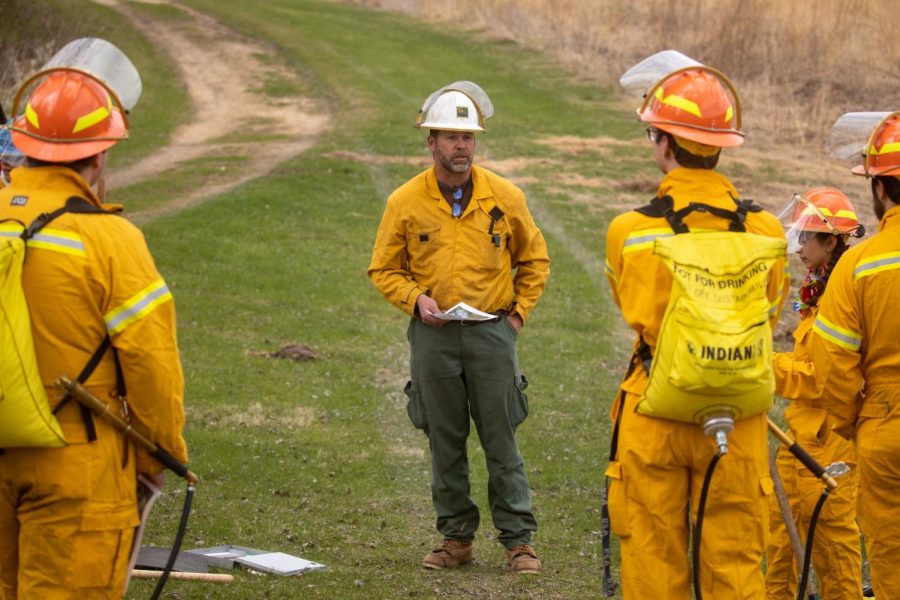Rountree Prairie Burns Bright
Students in the Reclamation, Environment and Conservation department conducted a prescribed burn on April 24 in the Rountree Prairie, a 12-acre prairie located near the Rountree Branch trail in Memorial Park.
The burn, manned by 12 students and staff in total, lasted approximately four hours and covered 60% of the prairie. The last time Rountree Prairie had been burned was in 2021.
Rountree Prairie is among the numerous prairies and conservation sites on campus that benefit from the integration of fire.
The Exponent had the opportunity to correspond with Dr. Christopher Baxter, Professor of Crop and Soil Science and REC and coordinator of the burn, about the importance of prescribed burn practices.
“Burning in the spring provides a competitive advantage to the native warm season species and helps control invasive woody vegetation, but getting the native species established in the first place can be a difficult process,” Baxter explained.
Baxter added, “It often requires removal of existing vegetation with herbicides and/or mechanical removal, preparing the seedbed and finally seeding with a mixture of native species that are adapted to the site. Once established, these areas need to be kept free of encroaching woody vegetation through regular mowing or burning.”
This process of revegetation also requires good, safe weather that gives an advantage to warm season vegetation.
“Most of the smaller burn units on our campus are dominated by cool season grasses such as orchard grass, smooth bromegrass, reed canary grass and turf species like tall fescue. Early spring is the ideal time to burn these areas, before or shortly after the grasses break dormancy,” Baxter said.
Because of the snowing, raining and cold weather through late March and April, these grasses sprung to life quickly and vibrantly. This provided an obstacle to burning.
In contrast, “Rountree Prairie is one of our restored prairie burn units and is dominated by native warm season grasses like big bluestem, switchgrass and Indiangrass,” Baxter continued. “These grasses stay dormant later into the spring and early summer until soil temperatures increase above 50°F, so there is a longer window of time when the ground fuels remain burnable. This is why we were able to burn the Rountree Prairie successfully.”
Not only did the prairie burn achieve its goal of batting back woody, invasive species, but “it also provided a great opportunity to teach our students about using prescribed fire as a management tool, understanding fire behavior and how to safely conduct a prescribed burn,” Baxter explained.
Baxter concluded, “I want to thank Mary Penn and the physical facilities staff for their assistance with communications and equipment used to conduct the burn, and Dr. Lynette Dornak and James Riser from the Department of Environmental Science and Society for lending their expertise.”
For students interested in joining the REC club or prescribed burns, please contact Dr. Christopher Baxter at [email protected] or the REC club president, Kevin Dorsey-Knotter, at [email protected].




